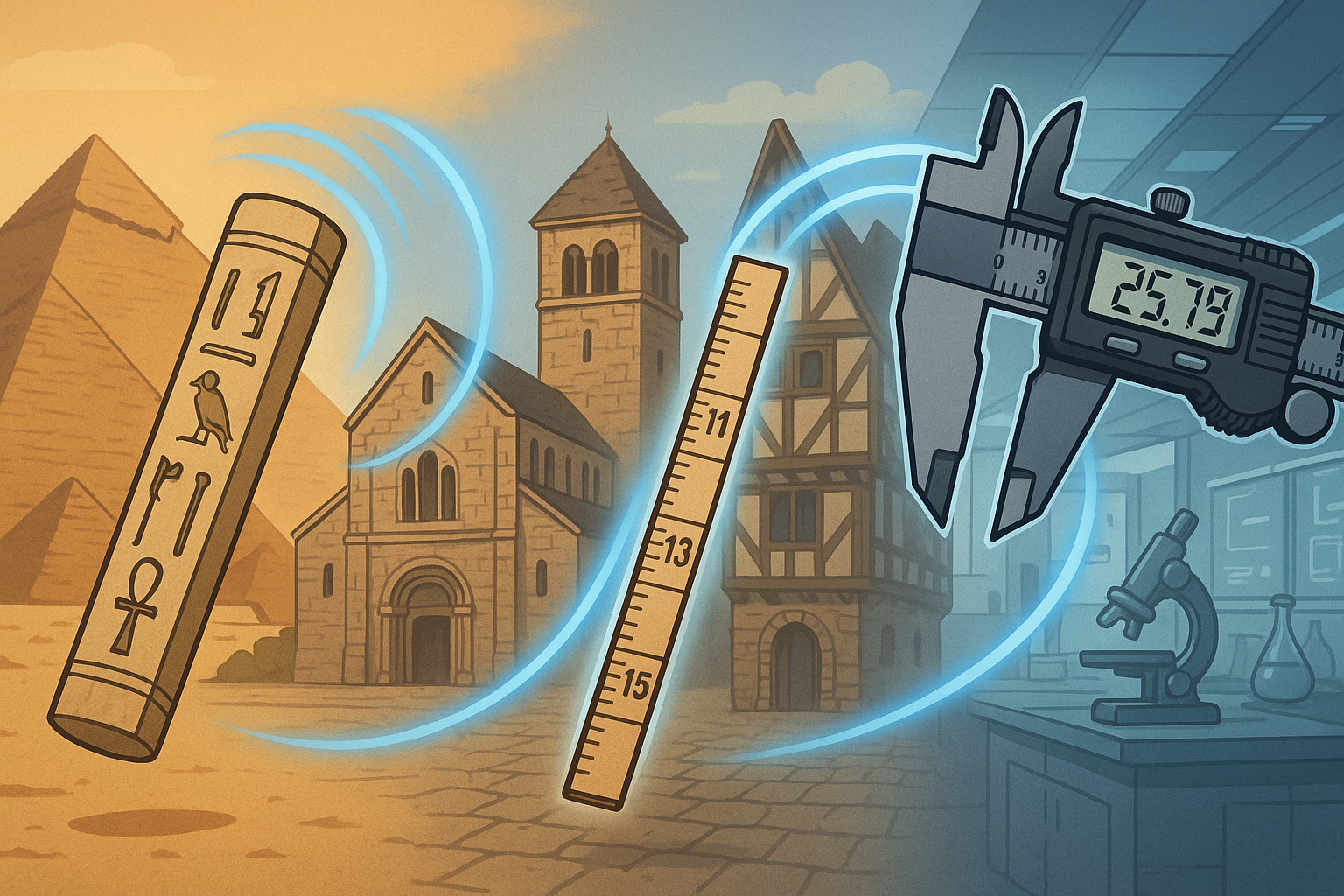
From Ancient Cubits to Digital Calipers: The Changing Face of Length Measurement
Journey through time to discover how different cultures defined distance, and how unit converters now unite these systems with a click.
Related Tools:
From Ancient Cubits to Digital Calipers: The Changing Face of Length Measurement
Imagine measuring your desk with your forearm. Sounds strange? That’s exactly how ancient Egyptians measured length—using the cubit, the distance from the elbow to the tip of the middle finger. As civilizations rose and fell, they brought their own tools, units, and philosophies about space and structure.
In this article, we travel through time—from the sands of ancient Egypt to the high-tech laboratories of today—to understand how humans have tried to capture something as elusive as distance.
📏 A Quick History of Measuring Length
🏺 The Ancient World
- Egyptian Cubit (c. 2700 BCE): Based on the human body. Commonly around 52.3 cm.
- Babylonian and Sumerian Units: Included spans, feet, and reeds.
- Greek and Roman Systems: Introduced standardized foot-based systems that echoed into modern units.
🏰 The Middle Ages
- Body-based Measures: Inches (from a thumb), yards (from a belt), and feet (from, well, feet!).
- Local Standards: Each town or region had its own version of the “foot,” leading to massive inconsistencies.
⚖️ The Metric Revolution
- 18th Century France: A meter was defined as one ten-millionth of the distance from the equator to the North Pole.
- Global Spread: The metric system gained worldwide popularity, becoming the standard in science and most countries.
🧪 The Digital Era
- Precision Instruments: Laser distance meters, digital calipers, and micrometers revolutionized accuracy.
- Software Integration: Engineering tools and web platforms now incorporate automatic conversions.
🌐 Bridging the Past and Present: Unit Converters
The need to convert units has never gone away. In fact, in a globalized, data-driven world, it’s more important than ever.
Modern unit converters let you effortlessly switch between:
- Meters ↔ Feet
- Inches ↔ Centimeters
- Yards ↔ Kilometers
- And even more obscure ones like shaku, vara, or pouce!
These tools are especially valuable for:
- International shipping
- Engineering and architecture
- DIY projects
- Scientific research
- Education
🧠 Fun Fact: Not All Feet Are Equal
Did you know the U.S. and international feet differ slightly? The U.S. survey foot is 0.3048006096 meters, while the international foot is 0.3048 meters. This tiny distinction can cause big issues in mapping or land surveying!
🚀 Conclusion: The Human Story Behind Numbers
Behind every unit of measurement lies a story—a culture, a need, a solution. What once depended on elbows and thumbs now relies on lasers and algorithms. And yet, the goal remains the same: to bring order to space.
Thanks to digital tools like unit converters, we no longer need to remember how many cubits make a meter. Just one click connects the ancient and the modern—bridging millennia with math.
